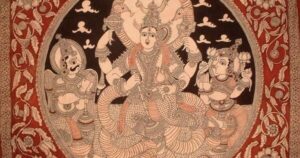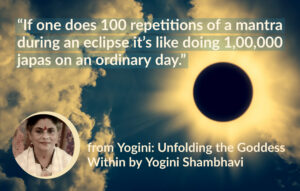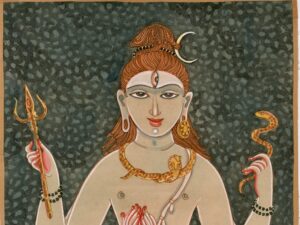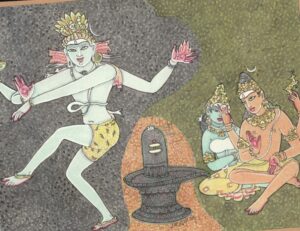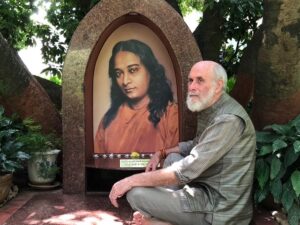Prana is not the breath, though it is closely related to it at a physical level. Many people define prana as the breath or call it the breath. This can help us approach the vast subject of prana but can be misleading if we take it literally.
In this article we will examine what prana is on different levels, its connection with the breath and its energy behind and beyond the breath, including various pranayama practices. Pranayama breathing practices can help us connect to the prana not only outwardly but inwardly, including leading us to the higher prana of the breathless state.
Prana broadly speaking is our vital energy that operates body and mind and has not only physical but also mental and spiritual aspects. So we will call prana here is our vital or life energy, with the qualification that it is the broader life energy in the world of nature, and specifically our own life energy as individual creatures, extending to the reincarnating soul.
Prana and the Breath
First let us examine the role of the breath relative to prana. The breath does serve to keep the prana or our life force in the body and feeds it. This is much like how food is necessary to develop and feed the tissues of the body. Breathing is the main function of the prana to sustain our physical life.
Prana derives from various external sources starting with the air taken by the lungs, the movement of the breath. This action of breathing is the main and most immediate life function we have. If a person fails to breathe, life cannot be sustained for very long afterwards.
We take in pranic life energy from our various openings or orifices in the head. These include the eyes, ears, nostrils and mouth. Air is taken in through the nostrils, sensations through the eyes and ears, food and beverages and air through the mouth.
The mind is also connected to these senses and brings in the life energy of words, emotions and thoughts, which includes that through human contact at a mental level. The breath also energizes the senses and mind and promotes digestion. We also take in life energy from the skin and the sense of touch that covers the entire body. The breath is only one part of this, though central in its function.
Prana and Agni
The human body is built around the digestive fire or Jatharagni in the navel region that extracts the prana from food and beverages. This is a kind of material fire digesting the earth and water elements. There is a second gaseous or pranic fire in the lungs and heart region that digests the prana from the air that we breath. This is called Pranagni or the Agni of Prana.
That prana so nourished by our external pranic inputs, and our digestion of them, runs all of our vital activities including through the other four pranas, Udana and Apana, upward and downward movement of vital energy, Samana and Vyana, contraction and expansion movement of vital energy.
Yet outer physical pranic sources sustain a deeper inner prana or life energy, whose ultimate origin is not physical, but our own Atman or inner Self, the immortal Divine consciousness at the core of our being. We have an inner spiritual pranic core which bodily processes of breathing, eating, sensing and thinking support at a physical level.
This inner pranic core or flame, like a pilot light in a gas stove, endures during deep sleep and goes on to another body after death. It supports all vital activities of breathing, digestion, circulation, sense and motor action and that of the mind. This inner Prana is beyond the breath, though held in the body by the breath.
Importance of Pranayama
Nurturing this inner Prana is the essence of all our pranic intakes, but it can also be built up more directly and powerfully at an inner level through the practice of Pranayama and the yogic breathing that is part of it.
The purpose of Pranayama is not simply to exercise the lungs or bring in more oxygen, which is but its initial phase. It is to calm and deepen our prana and link our outer prana, which is intimately connected with breathing, with our inner Prana, which is ultimately the energy of our deeper consciousness, our inner spirit or Atman.
As we calm and deepen the breath through Pranayama we develop our connection with our inner Prana and spirit. Yoga teaches us further how to balance and unify our pranic energies, which are usually dispersed by various currents of thought, emotion and sensation, and gather them together for a greater pranic force connected to a higher awareness.
Unitary Prana Beyond Birth and Death
Yogic pranayama works to balance the pranas within us. This begins with alternate nostril breathing to balance the Ida and Pingala Nadi pranic flows, which have lunar and solar energies. It extends to balance Udana and Apana as ascending and descending pranas, and Samana and Vyana as contracting and expanding energy flows (like the circulation of the blood or contraction and expansion of the muscles).
This balancing and concentration of Prana connects us back to our inner Prana at the level of consciousness. This unitary Prana is what allows the Kundalini Shakti to awaken and ascend through the Sushumna. As long as our Prana is divided, scattered and caught in dualistic currents, there can be no real awakening of Kundalini or opening of the chakras at their higher levels. Unitary Prana is the basis of the Yoga Shakti overall.
This unitary Prana in turn is connected to unitary mind or unitary Awareness. Both go together. Only if our vital energy and will power is unified and focused can we access a higher awareness. Yet only if our mind and consciousness is unified and focused can we access a higher Prana beyond the breath.
The breathless or samadhi state (kevala kumbhaka) is not just a state of not breathing. It is a state of unitary Prana and mind. In this unified state our deeper Self-awareness is able to witness both the breath and our thoughts from a standpoint of detachment, no longer identified with them. This removes our pranic attachment to body and mind, and all external sources of prana, and reconnects our Prana with the Self within. Then whether the outer breath continues we remain inwardly in state of awareness no longer defined by the breath or by the processes of birth and death.
This inner Prana behind the breath takes us beyond death. We can enter into it at death and continue our awareness to another birth or beyond birth and death altogether. Do not think your life is limited the physical body or your awareness is limited to this physical mind. Your are the all-pervasive deathless Atman, the Self of all.
These are special yogic secrets that can only be taught to those who have the capacity and preparation for it. They require a long-term sadhana in which we develop deeper powers of prana and mind, Yoga and Ayurveda, Hatha Yoga and Raja Yoga. It is not simply a matter of techniques of but developing our life energy as the expression of the deathless Self, which is also the deathless Prana.
Vamadeva

